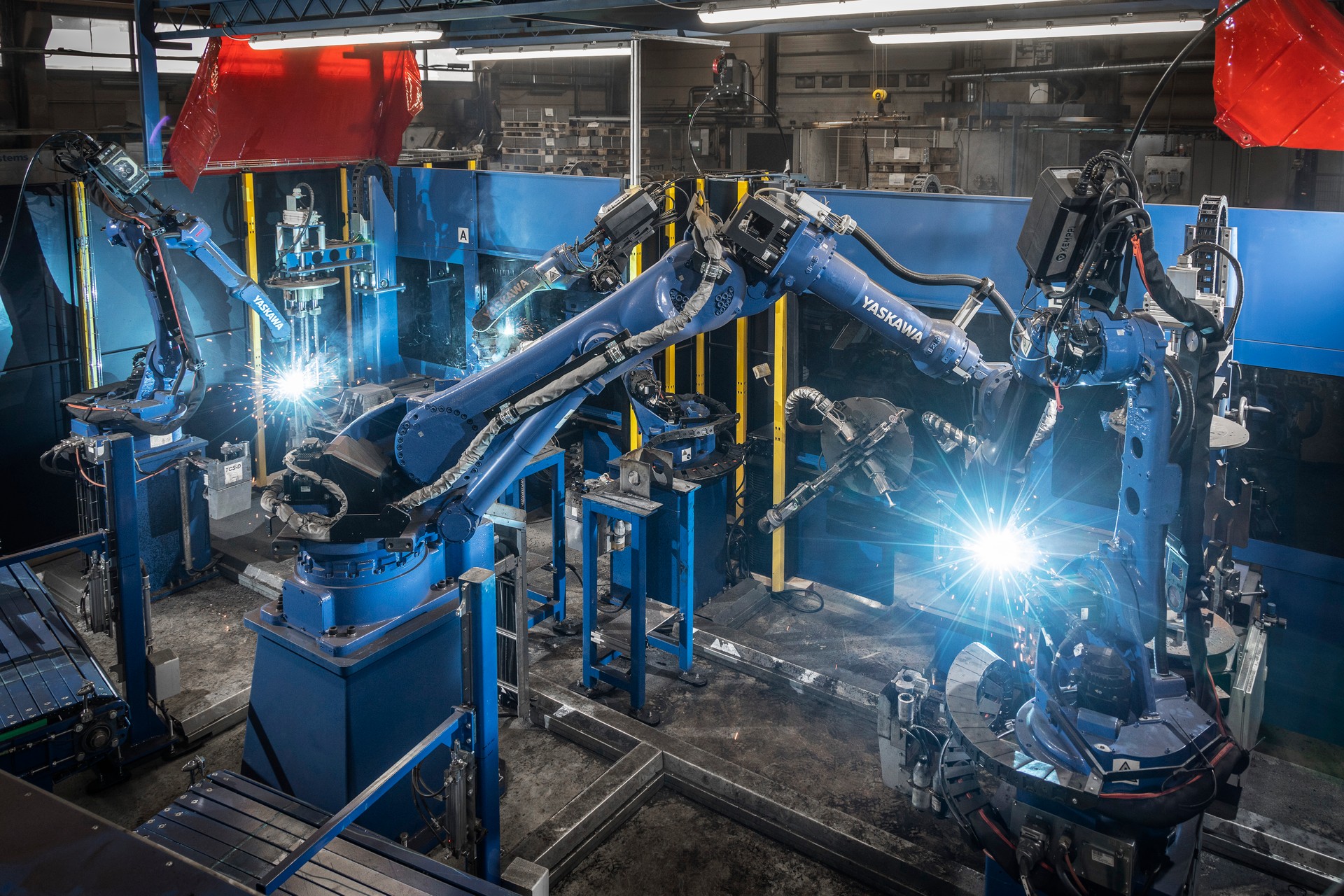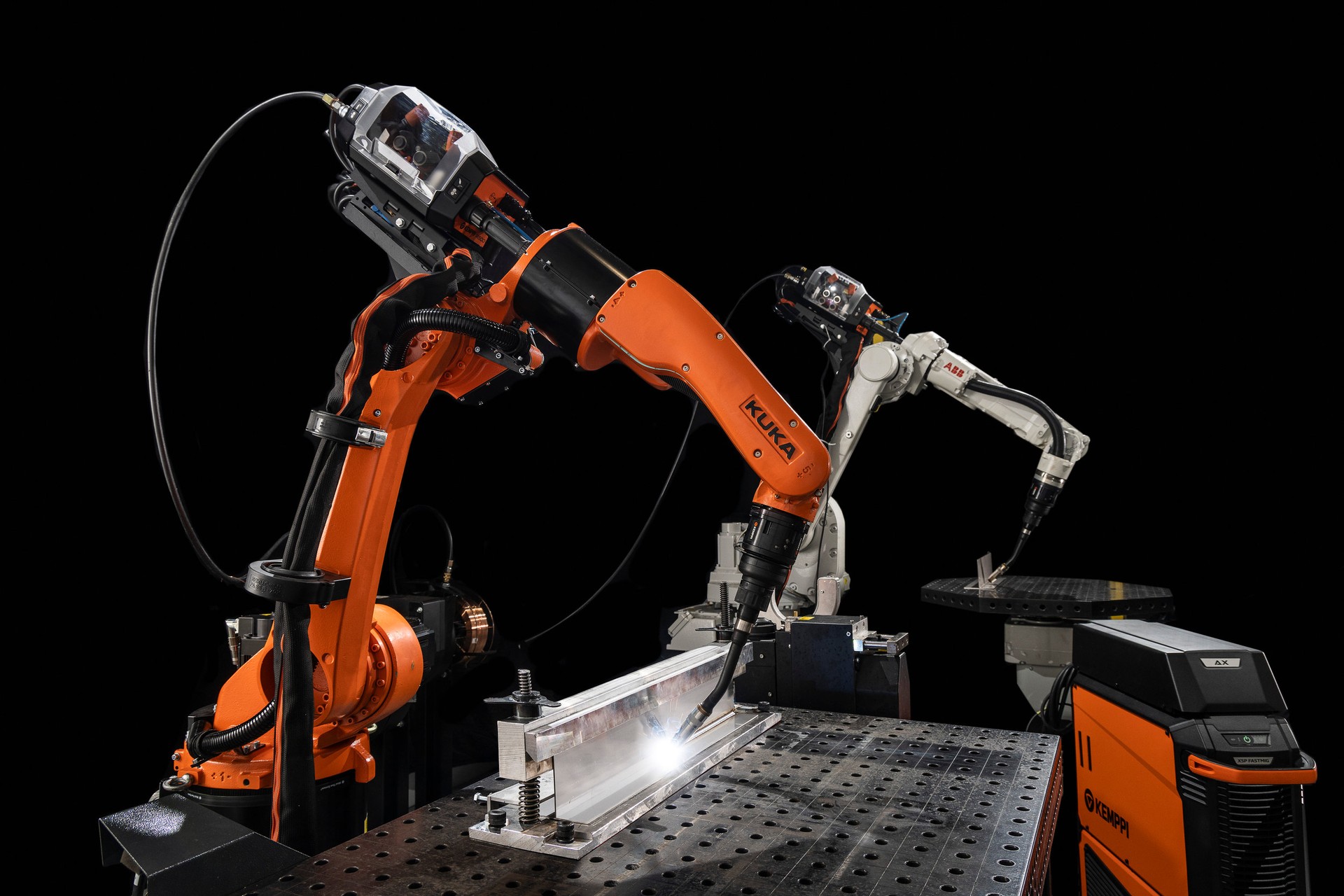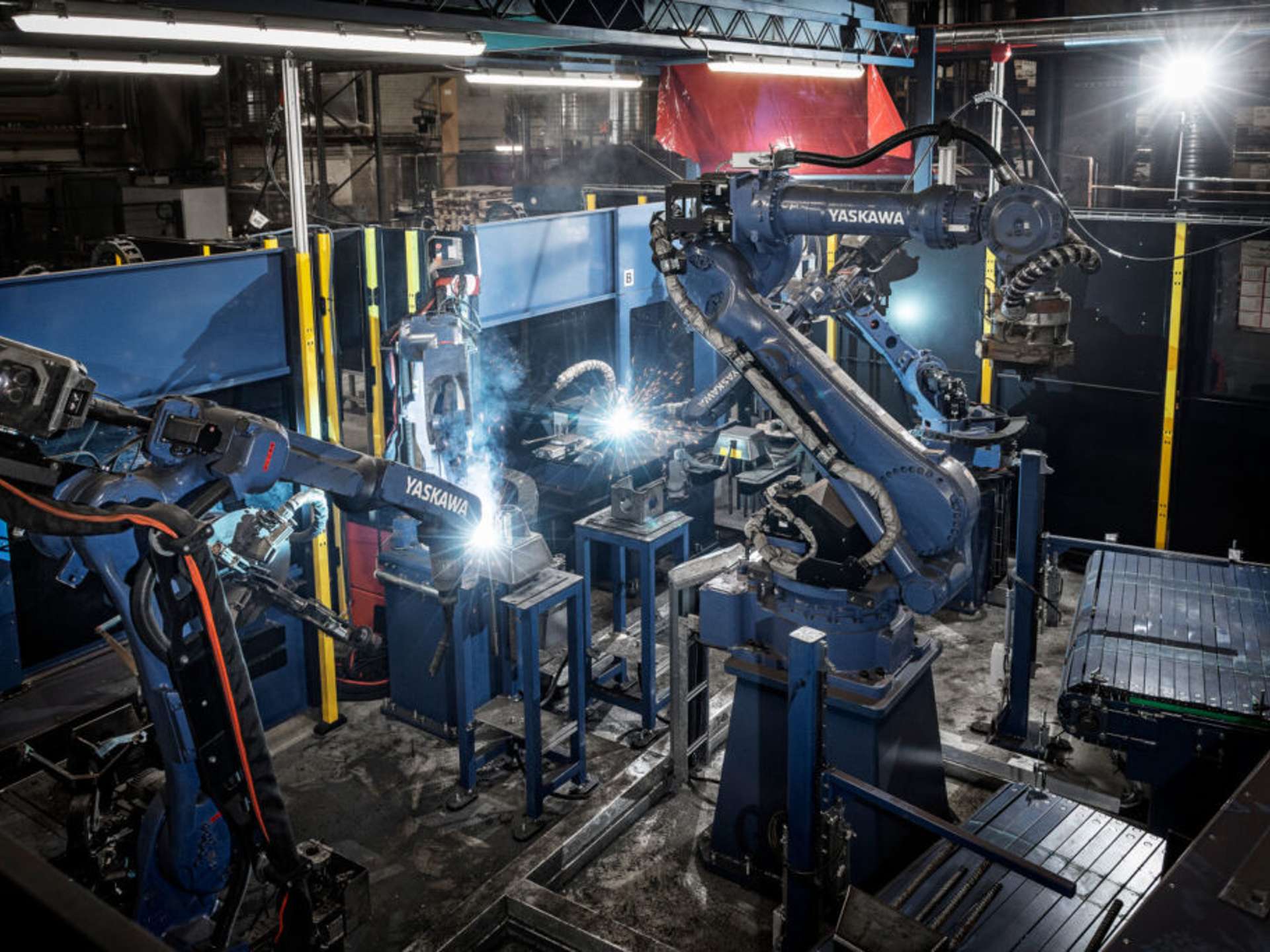
Automatisering av sveising
Smoothly integrating a welding power source into a robotic welding system
30. januar 2024
In today's advanced manufacturing processes, robotic welding systems have become increasingly common due to their precision, efficiency, and cost-effectiveness. However, the successful integration of a welding power source into a robotic welding system is crucial for achieving optimal performance. This article contains valuable insights and guidelines on how to smoothly integrate a welding power source into a robotic welding system for enhanced productivity and quality in welding operations.
Aku Laakso
An expert perspective
The author of this article, Aku Laakso, works as a Business Manager for Yaskawa Finland, whose parent company, Yaskawa Electric Corporation, is a multinational robot manufacturer best known for its high-quality welding robots and welding robot systems. Yaskawa Finland has delivered more than one thousand welding robot systems to Finland and Estonia over the course of 40 years.
Choosing the right welding power source
Before integrating a welding power source into a robotic welding system, it is essential to choose a power source that aligns with the requirements of the system. Factors such as welding process, material type, thickness, and joint configuration should be considered. Select a power source that offers the necessary current, synergic lines, and welding processes required for the desired welding applications.
If you are unsure about choosing a power source and/or its features, testing the power source with real workpieces before you order is the best way to know for sure. This will ensure that the welding power source is compatible with the robotic welding system. The power source should also have communication protocols and interfaces that can be easily integrated into the existing control system of the robot. Consult the robot manufacturer and seek technical support if necessary to confirm compatibility and establish a seamless connection. Normally, a robot manufacturer will have a ready-made interface and logic programs for every available welding power source.
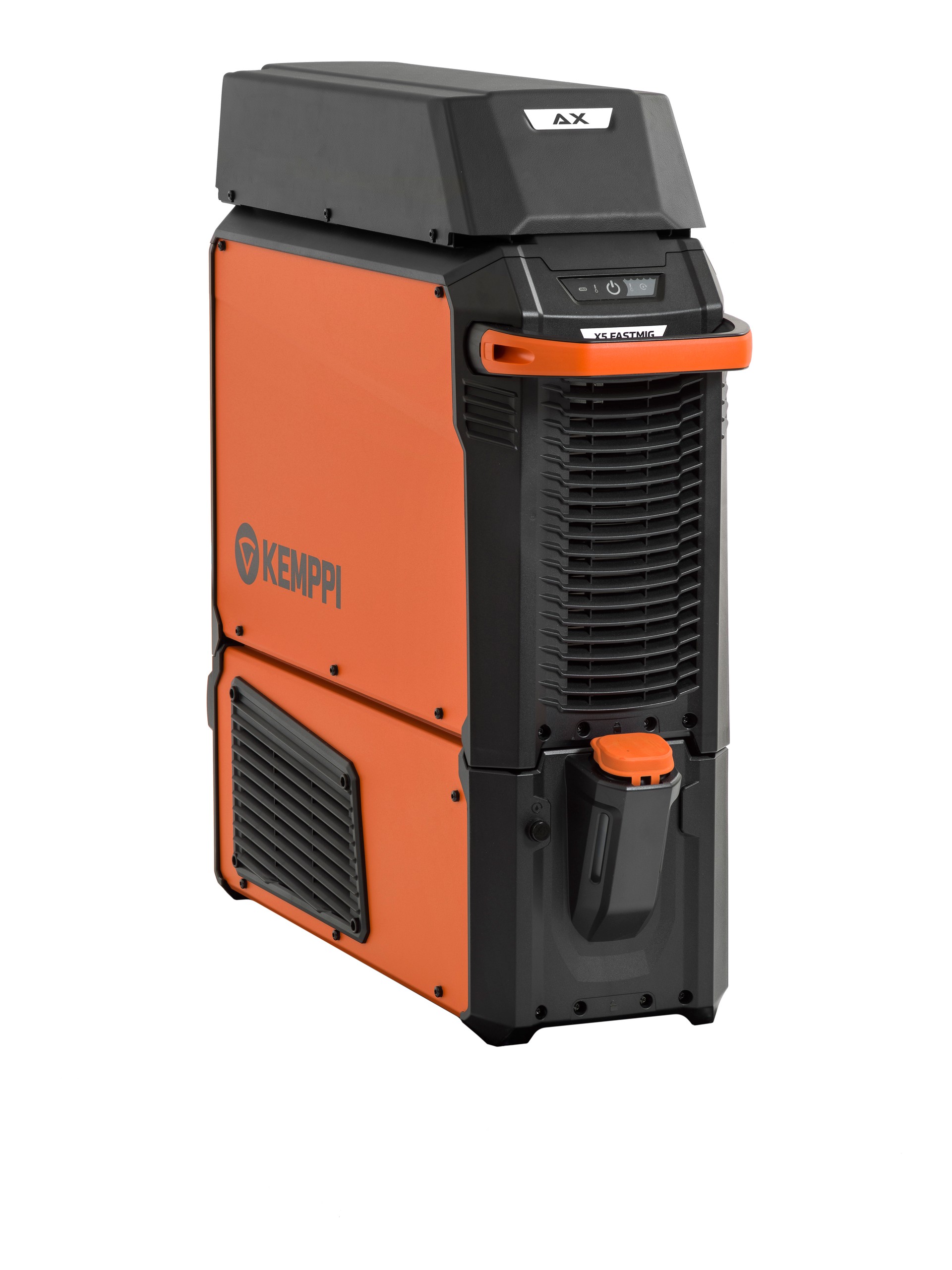
Electrical specifications
Proper electrical integration between the welding power source and the robotic welding system is crucial for reliable and efficient operation. First, you need to have a power supply that provides enough capacity to meet the requirements of the welding power source and the robot. Check the electrical specifications provided by the manufacturer. Proper grounding and shielding techniques should be employed to minimize electrical interference and ensure safety. Follow the recommended guidelines provided by the power source manufacturer.
Insufficient grounding is one of the most common reasons for errors in the welding process. Cable routing is also especially important to consider carefully. Arrange cables in a neat and organized manner to prevent tangling, interference, or accidental damage. Proper cable management is vital for maintaining signal integrity and minimizing downtime. The power source manufacturer´s guidelines for cable routing should be taken seriously. Improper cable routing or shielding will cause problems and/or data loss due to electromagnetism or other interfering factors.
Installing a welding power source
Proper mechanical integration ensures the stability and alignment of a welding power source within the robotic welding system. Securely mount the welding power source in a suitable location within the robotic cell while considering factors such as accessibility, cable routing, and cooling requirements. Install appropriate vibration-dampening measures, such as isolators or shock absorbers, to minimize the impact of vibrations generated during the welding process. This helps prevent damage to the power source and ensures consistent welding performance.
Fixtures placed between a welding torch and a robot are designed according to the needs of the welding application. In modern welding, cables, and pipes from the welding torch go through the robot arm, which makes cable management easier. If there is any doubt about torch selection, torch fixture, or cable management, modern offline planning software can create a helpful simulation.
Heat management
Welding power sources generate heat during operation, and effective cooling is essential to maintain their performance and prolong their lifespan. Always know the cooling requirements specified by the manufacturer and ensure that the integration into the robotic system allows for adequate water flow and ventilation. Additionally, establish a regular maintenance schedule to clean filters, inspect cables and connections, and address any potential issues promptly.
Robotic welding system safety
Adequate training for the usage and maintenance of a welding power source should be given to both an integrator and an end user. This is best done by a power source manufacturer or distributor since they have the most up-to-date knowledge about the power source properties. A welding power source has such a large impact on the productivity of a robotic welding system that training and maintenance should never be overlooked. Choosing and optimizing the right welding parameters and synergic lines has a significant impact on productivity. As always, safe use should be considered.
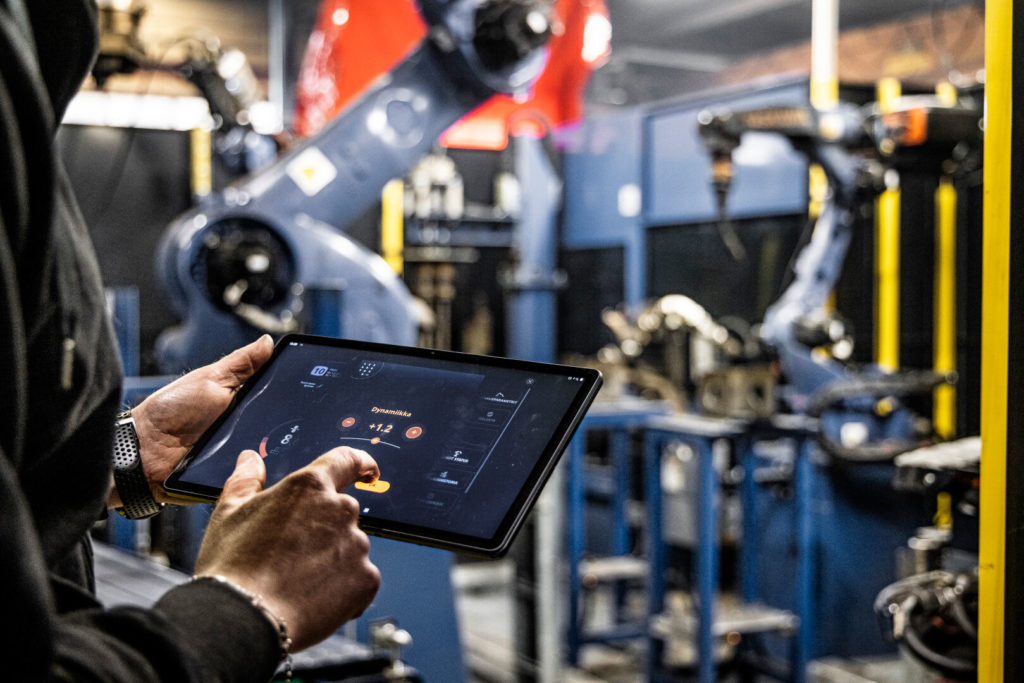
Software integration and data processing
Offline programming and digital twins have become increasingly common in the welding automation market. When offline programming software is integrated into the robot welding system, the welding power source also needs to be considered. A supplier must be able to offer an integrator the necessary 3D data and specifications needed for offline programming. Specifically, welding parameter setup needs to be possible via offline programming software. Traceability must also be considered in today´s workshops – welding power source data should be collected in the system and analyzed afterward in connection with quality deviations or customer complaints.
Maximizing quality and efficiency
Successfully integrating a welding power source into a robotic welding system is crucial for achieving optimal performance and productivity. By selecting the right power source, ensuring compatibility, and following proper electrical and mechanical integration techniques, manufacturers can enhance the quality and efficiency of their welding operations. Remember to consult the power source manufacturer and seek professional assistance and training when needed. With careful planning and diligence, a smooth integration can be achieved, leading to improved welding results and increased profitability.

Aku Laakso
Aku Laakso
Business Manager, Yaskawa Finland Oy. Business management and development professional with 8 years of experience in robotics and automation. Specialized in welding automation sales.
